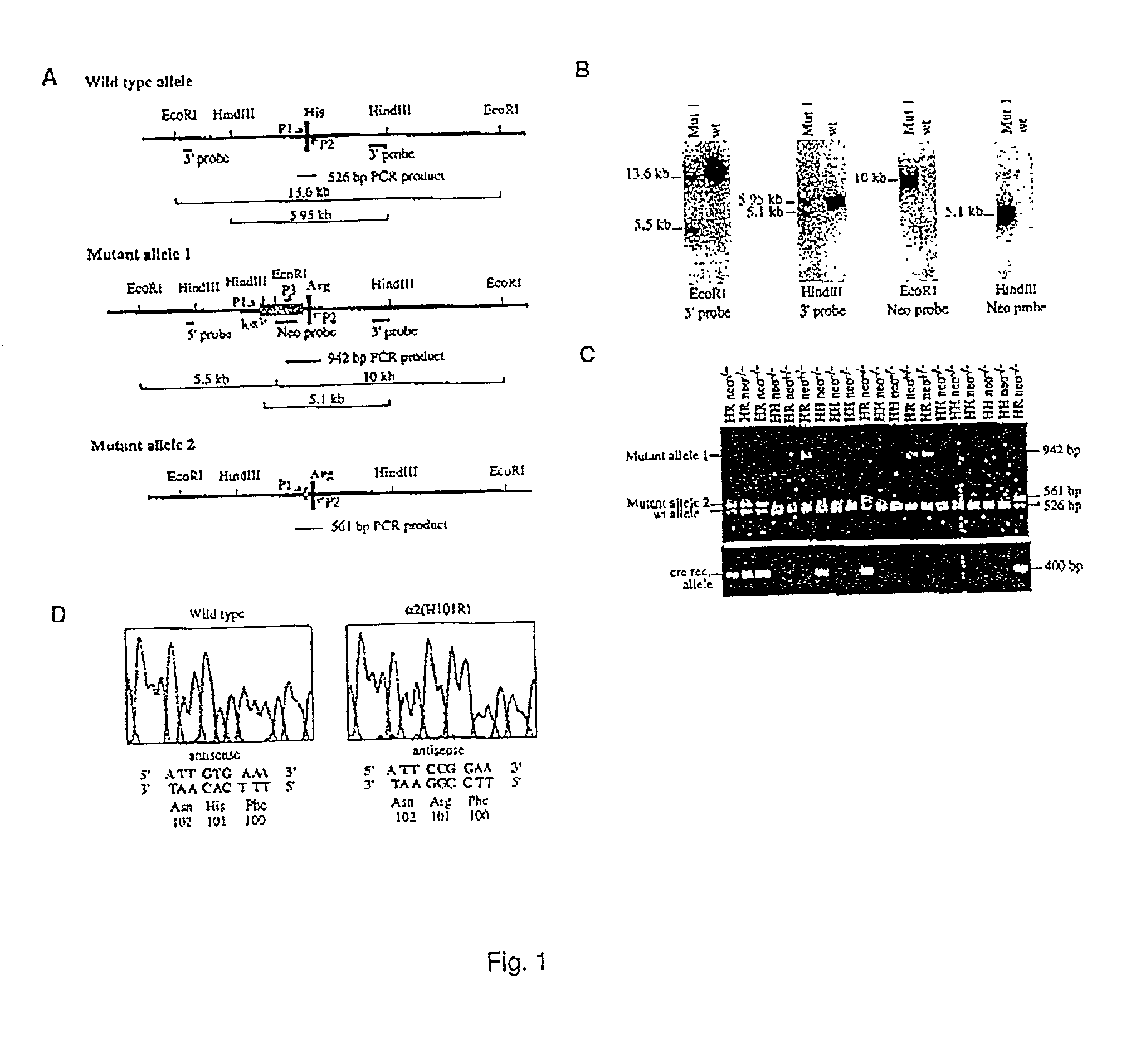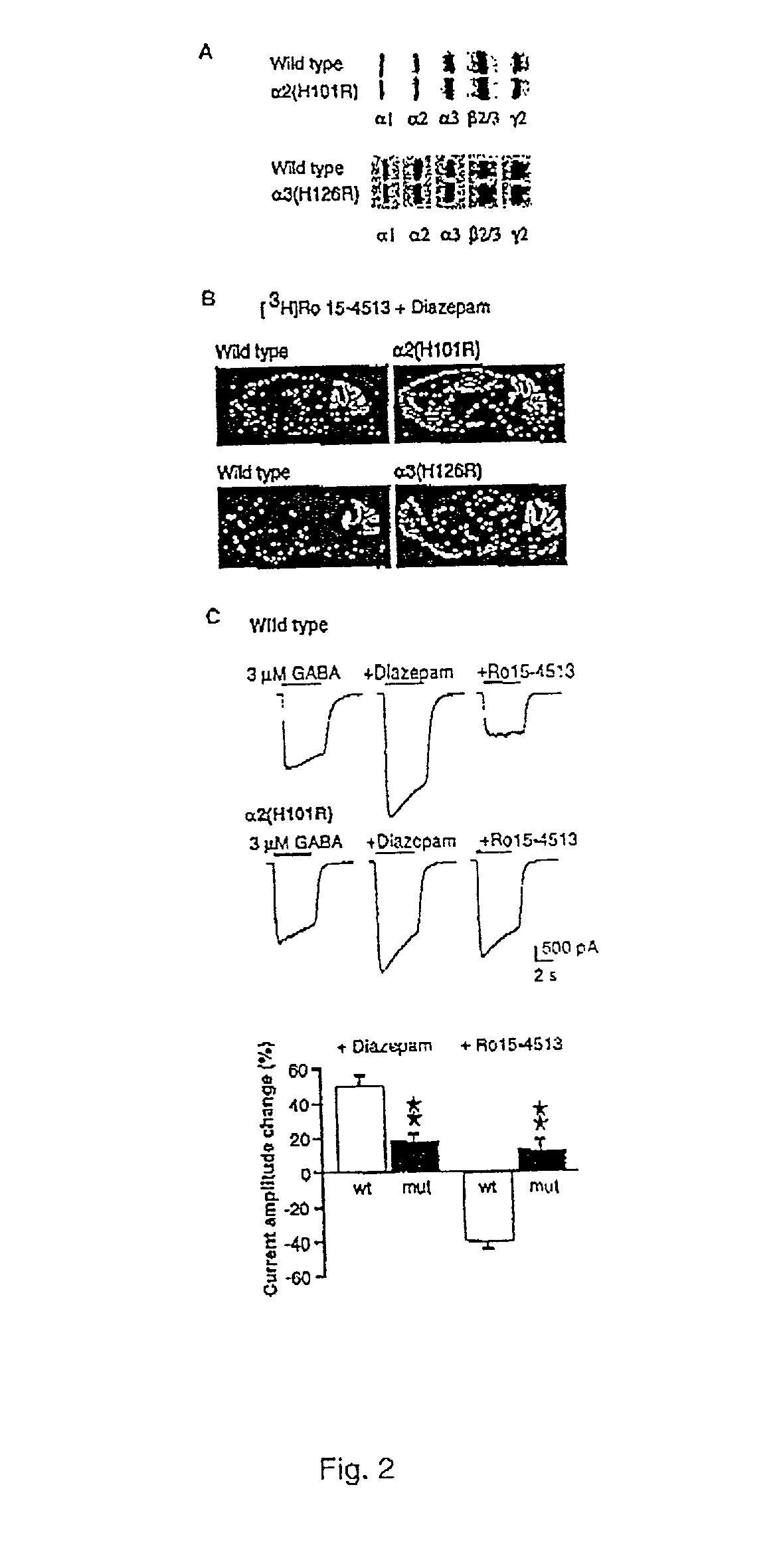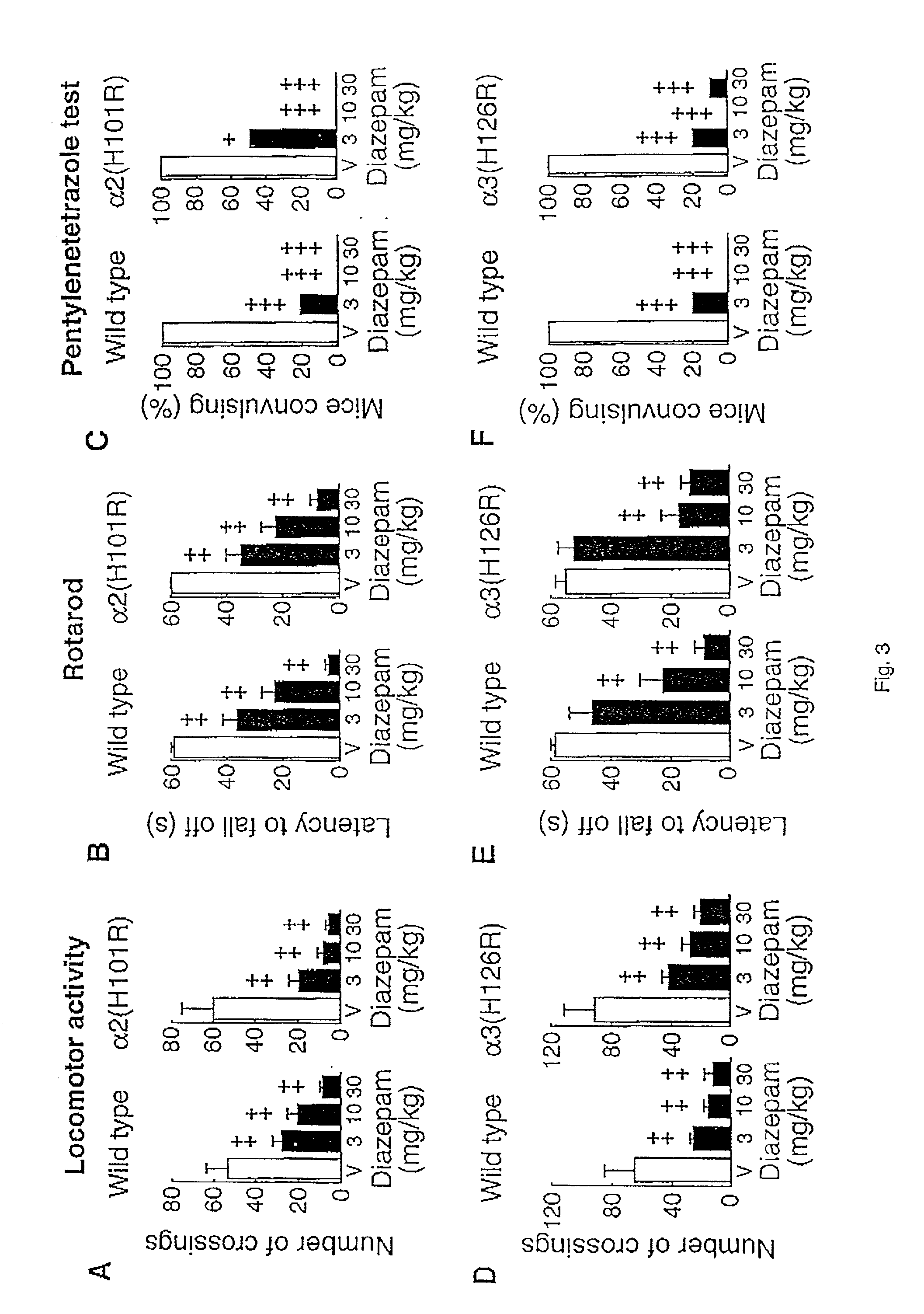Selective anxiolytic therapeutic agents
a selective anxiolytic and therapeutic agent technology, applied in the direction of biocide, plant growth regulators, animal/human proteins, etc., can solve the problems of limiting the therapeutic use of benzodiazepines, benzodiazepines also exert a variety of unwanted side effects, etc., to minimize unwanted side effects and reduce or strengthen binding affinity
- Summary
- Abstract
- Description
- Claims
- Application Information
AI Technical Summary
Benefits of technology
Problems solved by technology
Method used
Image
Examples
Embodiment Construction
[0020] The present invention is directed to a method for identifying a selective anxiolytic therapeutic agent that selectively or preferentially binds to the .alpha.2-GABA.sub.A receptor as compared to the .alpha.1-GABA.sub.A receptor, which agent allows for the treatment of an anxiety-related disorder while minimizing the unwanted side effects of such treatment mediated through the .alpha.1-GABA.sub.A receptor. The method comprises contacting a candidate molecule (test agent) with the .alpha.2-GABA.sub.A receptor and the .alpha.1-GABA.sub.A receptor and determining whether the candidate molecule selectively or preferentially binds to the .alpha.2-GABA.sub.A receptor as compared to the .alpha.1-GABA.sub.A receptor. The present invention is also directed to a selective anxiolytic therapeutic agent which selectively or preferentially binds the .alpha.2-GABA.sub.A receptor as compared to the .alpha.1-GABA.sub.A receptor. The present invention is also directed to a method of treating an...
PUM
| Property | Measurement | Unit |
|---|---|---|
| temperatures | aaaaa | aaaaa |
| temperatures | aaaaa | aaaaa |
| temperatures | aaaaa | aaaaa |
Abstract
Description
Claims
Application Information
 Login to View More
Login to View More - R&D
- Intellectual Property
- Life Sciences
- Materials
- Tech Scout
- Unparalleled Data Quality
- Higher Quality Content
- 60% Fewer Hallucinations
Browse by: Latest US Patents, China's latest patents, Technical Efficacy Thesaurus, Application Domain, Technology Topic, Popular Technical Reports.
© 2025 PatSnap. All rights reserved.Legal|Privacy policy|Modern Slavery Act Transparency Statement|Sitemap|About US| Contact US: help@patsnap.com



